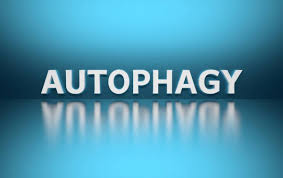
What is Biliary sludge, Biliary sand, Microlithiasis?
Definition:
Biliary sludge is a precipitate mixture of particulate matter and bile in the gallbladder lumen. It is also known as biliary sand or microlithiasis.
Biliary sludge is also called Gall bladder sludge, Biliary sediment.
The composition of biliary sludge is - cholesterol, calcium, bilirubin.
What are the Predisposing factors and Causes?
1. Pregnancy
2. Rapid weight loss
3. Prolonged fasting
4. Critical illness
5. Long term total parenteral nutrition ( TPN )
6. Drugs; Ceftriaxone, octreotide
7. Bone marrow transplant
8. Alcohol drinking.
What are the Clinical features of Biliary sludge?
1. Pain :
Biliary colic is a colicky pain present in the right hypochondrium, which is in the upper right quadrant of the abdomen.
2. Fever:
3. Jaundice:
Yellowish sclera and skin
Jaundice may develop if common bile duct obstruction develops.
4. Nausea and vomiting:
What are the Complications of Biliary sludge?
- Approximately 50% of cases resolve spontaneously
- 20% persist asymptomatic
- 5-10% develop gallbladder stones/cholelithiasis.
- 10-15% lead to acute acalculous cholecystitis and acute pancreatitis.
- Acute cholangitis.
How to diagnose Biliary sludge?
Investigation:-
1. Blood:
Cytological tests-
Total leukocyte count- increased. Differential leukocyte count- increased neutrophil count.
Biochemistry –
Liver function test ( LFT ) -
Kidney function test ( KFT ) -
2. ECG Electrocardiography:
ECG is needed to rule out heart pathology which is the common differential diagnosis of cholelithiasis.
3. Ultrasound:
Trans-abdominal Ultrasonography-
What are the ultrasound findings?
Ultrasonography finding of biliary sludge is - amorphous, low-level echoes within the dependent position gallbladder lumen, with no acoustic shadowing.
Endoscopic ultrasonography
Color Doppler:
Showing no vascularity
4. CT Scan abdomen:
What is Tumefactive sludge?
Sometimes sludge may look like polypoid tumors and so-called tumefactive sludge.
What is Hepatization?
When biliary sludge is filling the whole gall bladder and has the same echotexture as that of the liver and look like liver called hepatization.
What is the treatment of biliary sludge?
1. Asymptomatic patients:
No treatment is needed for asymptomatic patients.
2. Symptomatic patients:
Conservative management:
Surgical management:
Cholecystectomy is indicated in symptomatic patients.
What is the prevention of biliary sludge?
Natural preventive measures of gall bladder-related diseases.
A healthy diet is following:
Healthy diet

Citrus fruits - oranges, lemon,
Leafy green vegetables - spinach, broccoli
Fibers in diet - banana, carrot, radish
Tomatoes
Avocado
Kiwi
Low or zero fat diet
Dairy products -Milk, yogurt,
Nuts - walnuts
Seeds - flax-seed
Legumes, whole grains
Vitamin C and Calcium are beneficial.
Polyunsaturated fatty acids, Omega 3 fatty acids, fish
Antioxidants
Foods to avoid are the following:
Red meat.
Processed meat.
Fried foods.
Full-fat dairy products.
Baked food is made up of refined carbohydrates.
Chocolates, biscuits.
Spicy food.
Avoid a sedentary lifestyle.
Manage regular exercise and workouts.
Avoid smocking.








Thank you so much
ReplyDeletethankyou for posting this
ReplyDeleteDr. Sushant Wadhera offers best laparoscopic gall bladder stone surgery in Sarita Vihar,Delhi he is one of the best gall bladder surgeon in Delhi